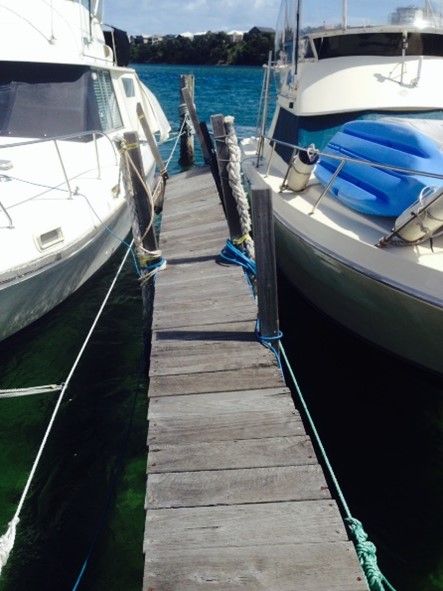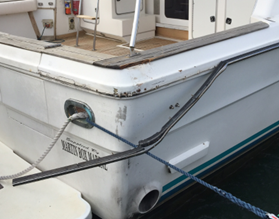Wake is the wave effect created by a vessel moving through the water.
The size of a vessel’s wake depends on many factors, including:
- shape of the hull
- speed
- distribution of the load
- engine angle
- how the vessel is driven (trim).
Skippers need to consider the impact their wake has on a waterway and other users.
Effects of wake
Excessive wake can have a significant impact on the waterway environment and infrastructure.
In narrow waterways, such as a river system, wake can have a significant impact on the surrounding environment including damage to shorelines and jetties, pens or moored vessels.
Vessel wake that causes moored vessels to roll and pitch puts stress on the vessel and the pen, resulting in costly damage to infrastructure for vessel owners and marina managers. It could also cause serious injury to people on board or even capsize small vessels.
Remember, as the skipper, you’re responsible for the impact your wake has on other waterway users.
It is an offence to navigate a vessel in a manner that causes damaging wake and you may be liable for the cost of damage caused by your vessel’s wake.
How to reduce your wake
Ensure your vessel is well trimmed
Trim is defined as how a vessel sits in the water while underway. The weight in the vessel must be distributed evenly so that the vessel sits flat. A vessel that is driven ‘half on the plane’, will generate the most wash – regardless of the vessel’s size.
With smaller boats, the stern will tend to dig in and the bow will rise – making it very difficult for you to keep a proper lookout ahead. A vessel driven this way will also tend to use more fuel.
You can improve your vessel’s trim by adjusting the angle of the leg of your engine. Adjusting the angle of your engine reduces the wake and will often provide a smoother ride.
Always try to minimise the time you spend transitioning onto the plane.
Slow down
When navigating in a restricted speed limit area like an 8-knot area, a reduction in speed of just 2 knots can significantly improve the vessel trim and reduce the wake it creates.
When approaching an anchorage, marina, or the shore, always slow down well in advance and be mindful of possible damage to infrastructure and considerate of others.
Keep a look out
While navigating, look behind occasionally to check your boat is not creating wake that affects others and the surrounding environment. Always keep a proper lookout for smaller craft and slow down when close to shore.
If your wake is causing other vessels to rock at all or is causing any sort of breaking or ‘slapping’ waves on the shore, you need to slow down further.
If you’re unsure if your wake is affecting others, take your engine/s out of gear and wait until your vessel is no longer making any wake before re-engaging your engines and carefully driving forward.
As a rule of thumb, if your vessel is making waves that are bigger than what you might reasonably expect in an area (from wind, swell etc), then there is a high risk that you might be causing problems – especially if you are close to shore or other vessels.
Certain hull designs (large cruisers) can cause a very large wake that could capsize small dinghies, damage moored boats and other property, and contribute to foreshore erosion.
Why reduce your wake?
Reducing your wake is better for the environment, other waterway users and for your vessel.
A vessel that produces large wake is likely to be operating inefficiently costing you more money in fuel and adding wear and tear on your vessel’s engine.
A well-trimmed vessel will travel through the water more efficiently, improving comfort on board and limiting impact on other waterway users and the local environment.
Resources
Help us spread this message. Access our community resources.



